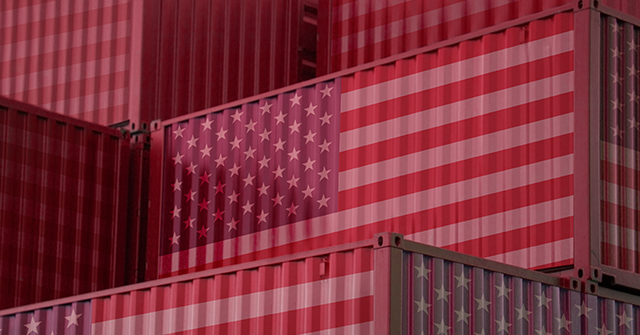Tarifflation Narrative Falls Apart
The August producer price index (PPI) report delivered yet another blow to the doomsayers who predicted President Donald Trump’s tariffs would ignite inflation. Instead of climbing, the Bureau of Labor Statistics (BLS) said producer prices for final demand fell 0.1 percent in August.
Economists had expected a 0.3 percent gain, once again showing that Wall Street’s establishment economists are still attached to the tarifflation narrative. Year-over-year, PPI rose just 2.6 percent, far below forecasts of 3.3 percent.
The revision to July also tilted the trend lower, with the prior 0.9 percent jump reduced to 0.7 percent. Reality has undercut the claim that tariffs would produce a cascade of price hikes.
Margins Collapse Again and Goods Prices Barely Budged
The biggest drag on prices came from services, where prices dropped 0.2 percent. The most important driver was a 1.7 percent plunge in “trade services,“ the Bureau of Labor Statistics measurement of markups wholesalers and retailers charge. Businesses are clearly absorbing higher costs rather than passing them on. If tariffs were a “national sales tax” on consumers, as Kamala Harris and countless Wall Street economists claimed, these margins should be holding steady or rising. Instead, they are shrinking—just as they did in April and June.
Final demand goods edged up just 0.1 percent, thanks to declining energy prices. Excluding energy and food prices, final demand goods prices climbed 0.3 percent. Service prices fell 0.2 percent.
Prices of personal consumption goods were completely flat for the month, indicating that consumers are not being squeezed by tariffs. Personal home electronic equipment prices were flat. Household appliance prices fell 0.5 percent. Car prices climbed just 0.2 percent. Household furniture prices rose 0.2 percent, and commercial furniture prices were flat. Clothing prices for men and boys declined 0.1 percent, and clothing prices for women and girls were flat.
This is not inflation but relative price shifts between categories. If tariffs are driving some prices higher, these are being more than offset by declining prices elsewhere. As the Council of Economic Advisers has noted, many analysts and pundits are confusing relative price changes with inflation. There will always be some of the former. What we’re not seeing is the latter.
Even further back in the supply chain, the story is the same. Processed goods prices rose 0.4 percent, but unprocessed goods fell 1.1 percent, driven by a 2.8 percent drop in crude oil. Intermediate services ticked up 0.3 percent. These are modest, mixed signals—nothing like the sweeping surge that tariff critics promised. The inflationary story stops at the warehouse door.
From Lonely Argument to Mainstream View
For months, we’ve argued that tariffs are not hitting consumers with higher prices but squeezing margins for businesses and exporters. That was a lonely position to defend for the first half of this year. Now it’s fast becoming the conventional wisdom.
On CNBC’s Squawk Box Tuesday, Mohamed El-Erian said:
“There’s the exporter, the importer, and the consumer. And so far the consumer is carrying the least of the burden. … They’re finding out that they cannot pass through as much of the price increases as they want. And that is particularly true for those who sell to lower income consumers. So what we’re getting is that this has to be absorbed, either by the exporter or importer…What we’re learning is that the final impact on the consumer is much less than people expected.”
That’s exactly what the PPI shows: margins squeezed, costs absorbed, and consumers shielded. The tarifflation narrative is dead.
The Case for a Bigger Fed Cut
The Fed has long insisted it is “data dependent.” If that’s true, the latest data leave little choice but to ease more aggressively.
Producer prices fell instead of rising. Payroll growth was far weaker than previously thought. Benchmark revisions wiped out nearly a million jobs.
On CNBC, Mohamed El-Erian put it bluntly: these numbers point to a 50-basis-point rate cut. The Fed can keep pretending tariffs are fueling inflation, or it can recognize what the data show: costs are being absorbed, inflation is contained, and growth is slowing.
The time has come for a big cut in rates, followed by a series of cuts to bring rates down from their currently restrictive stance.
Read the full article here
